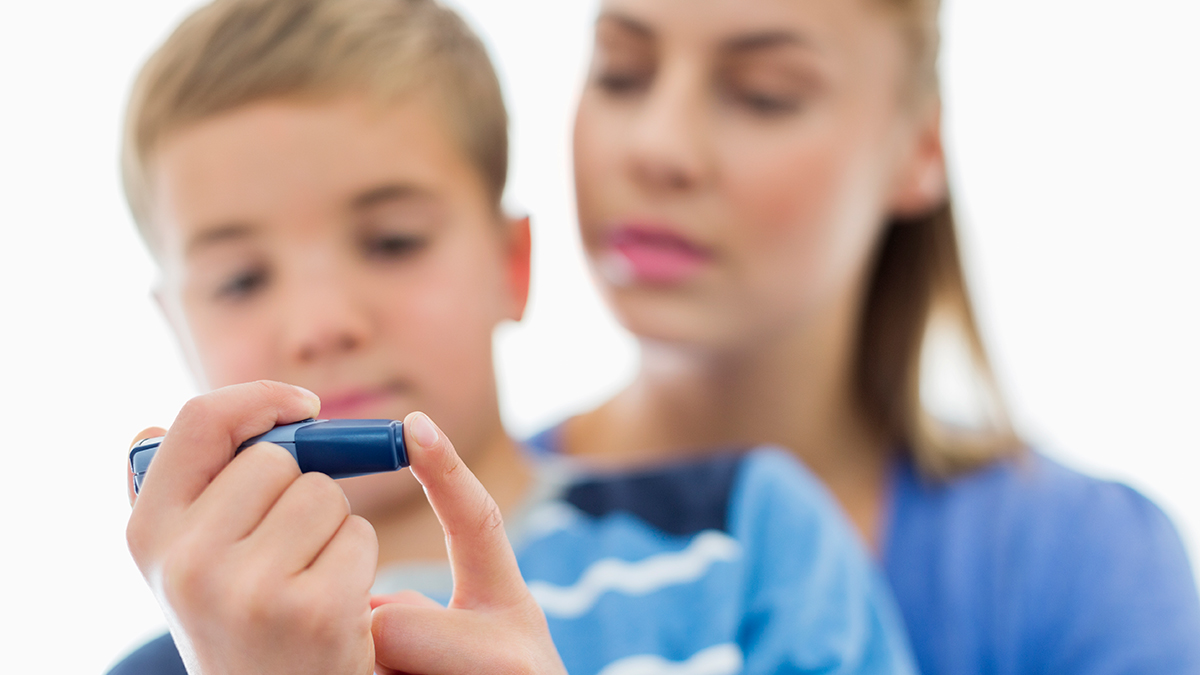
With flu season fully under way and the holidays just behind us, we are susceptible to a common cold or contagious individuals carrying illness-causing bacteria. Being sick is never fun, but for people with type 1 diabetes (T1D) it poses extra problems. When a person gets sick, their body is under stress. To combat that stress, the body naturally releases hormones that help fight disease. Those hormones, however, cause blood glucose levels in the body to rise, and disrupt the way insulin lowers blood-glucose levels, among other effects.
Preventing an illness is always the best outcome. So getting a flu shot every year is advised. It’s important to make sleep and hydration a priority, as well as washing hands often. But, a cold can still catch a person at any time. Since having the flu with type 1 diabetes can pose serious risks, it’s critical to have a plan of action in place.
Monitoring Your Needs
When you’re under the weather, it’s crucial to carefully monitor your blood glucose and ketones more often than usual, as often as every four hours. Check your continuous glucose monitor (CGM) if you have one, or frequently use finger sticks. It may be necessary to take extra insulin to bring down higher blood glucose levels.
Elevated ketone levels often occur when blood sugar readings are high. This can be a sign that the body is using fat and muscle for energy, instead of sugar. Be on the lookout for ketones, as very high levels could lead to diabetic ketoacidosis (DKA), a dangerous condition that demands immediate medical attention, and can be fatal if left untreated.
Administering Medications
It is more important than ever to continue a normal schedule of medications when you feel sick, even if you’re having a hard time keeping food and liquid down. Beyond insulin, many over-the-counter (OTC) medications also affect blood glucose levels. Though there are some sugar-free cough syrups on the market, many such syrups contain sugar, which only exacerbates already high blood glucose levels. That’s why pills taken orally—that have the same ingredients as syrups—can be a better choice if they contain no carbohydrates. Other drugs like decongestants also raise blood glucose. On the other hand, aspirin in large doses can lower blood glucose levels.
You need to be aware of the effects of pain and fever reducers, too. Acetaminophen, which helps counteract minor aches and fevers associated with the flu or a cold, can cause false or no readings in CGMs, and can be toxic to the liver and kidneys. So, anyone with kidney complications should be cautious about using these drugs. Ibuprofen should also be handled with care. It increases the hypoglycemic effect of insulin.
Careful Consumption
Because it can be difficult to stick to your normal meal plan when feeling unwell, it’s good to always have on hand products that you know will help keep up your carbohydrate intake in a healthy way. Foods like crackers, vegetable or noodle soups, unsweetened applesauce, or fruit-flavored yogurt are all easy-on-the-stomach selections. If even those mild foods prove difficult to swallow, then liquids can be a short-term solution.
If blood sugars are in range, you can start with drinks that contain carbohydrates, and plan to consume something every three to four hours. Options include, fruit juices such as orange or cranberry, sports drinks and regular soft drinks. It’s important to stay well hydrated, especially when ketones are present, to flush them out. Increase your intake of carb-free choices like water, broth, and sugar-free gelatin, popsicles or soft drinks.
Prepare for Emergencies
It is vital to be ready for the worst, even if you never experience it. Have your doctor’s phone numbers (including how to reach them at night and on weekends or holidays) ready in case you encounter these symptoms:
- Vomiting or diarrhea for more than six hours
- Having trouble breathing
- A fever that won’t go away after a couple of days
- Large levels of ketones
- Unable to keep food or liquid down and are experiencing hypoglycemia
If you do need to make an emergency room visit, it is vital that you mention that you have T1D, and have an ID bracelet prominently displayed. For children, call a doctor if they:
- Have trouble breathing or exhibit blue lips
- Won’t eat or drink
- Experience severe ear pain
- Show much more sleepiness than usual
Check out these other Breakthrough T1D tips for managing the flu with type 1 diabetes. We wish you and your family a safe and healthy cold and flu season!